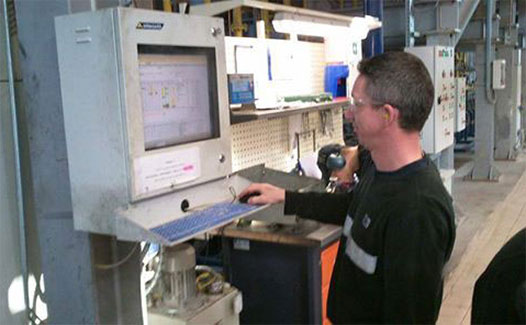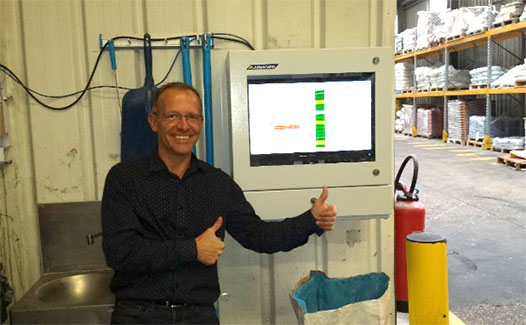
Ah yes, the Internet of Things (IoT), welcomed to the manufacturing family like a returning military hero – well, mostly. Indeed, the IoT has been commended for making the 10% of manufacturing plants and factories who use it more efficient and productive, through web connectivity right at this very moment.
If you form part of the 10%, welcome to industry 4.0. For those manufacturing firms yet to embrace the IoT, Forbes would tell you that ‘in a marketplace where you should be doing everything to survive, you’re lagging behind if you’re not taking advantage of internet connectivity.’
Don’t listen to Forbes, there will be reasons why you’ve not joined the IoT revolution yet, but we do suggest that you jump on the IoT bandwagon sooner rather than later. When you do, you can benefit from the pointers in this piece too, so don’t fret.
For those of you already familiar with the IoT, while its role in the here and now is important to your manufacturing operation, what role will it play in the future? What have you put in place to sustain the IoT on your manufacturing floor for years to come?
Let’s face it, the internet isn’t going to go away, but the devices you currently use on the manufacturing floor for connectivity won’t last forever.
That’s not to put the ‘kibosh’ on the Internet of Things, it’s undoubtedly transformed, and continues to transform, manufacturing. The IoT is forward-thinking, however, the reality is that the apparatus needed to sustain internet connectivity is vulnerable when used on the manufacturing floor.
The question is, how do you futureproof such apparatus?
We’re so glad you asked. Figurative show of hands if you use computers on your manufacturing floor. Right, that’s where to start. Futureproofing internet connected computers used on the manufacturing floor will go some way to sustaining the IoT for years to come.
How to futureproof manufacturing floor internet connected computers
Let’s put this into context. To futureproof cell phones, owners will put them in protective cases. To protect iPads, owners will put them in protective cases to prevent that nasty looking smashed screen effect. You see where we’re going with this, right?
You’ve got it. If you’re using computers on the manufacturing floor, you only have to consider the environment that those computers are expected to operate in to know that putting them in a protective enclosure makes sense.
To futureproof your internet connected manufacturing floor computers you need some serious hardware, and purpose-built industrial computer enclosures fit the bill.
We’re talking NEMA 4 or NEMA 4X level protection that will prevent anything getting in whether it’s dust, dirt, liquids or otherwise. What you get is a complete containment system for your computer.
 Protecting computers on the manufacturing floor. Just one of the keys to futureproofing the Internet of Things.
Protecting computers on the manufacturing floor. Just one of the keys to futureproofing the Internet of Things.
Sounds expensive you say. Evaluate the cost of an enclosure against the cost of losing internet connectivity for a couple of hours, rendering the IoT useless, and investment in a computer protection system will seem like pocket change.
Make protecting manufacturing floor computers a priority and you’re making a start on futureproofing the Internet of Things. Computer enclosures are proven to last upwards of 10 years, allowing you to make use of the current IT equipment you have, without the need to constantly upgrade apparatus and software or retrain staff.
Not only that, computer enclosures will add value to your manufacturing floor by improving manufacturing productivity. They achieve this by reducing IT downtime, and crucially, keeping you connected to the internet.
The 5 step plan to choosing enclosures

We’ve put together this five point checklist for choosing computer enclosures to futureproof the IoT on your manufacturing floor. Knowing this will help you to quickly identify a solid solution for your factory or plant.
1. Only opt for National Electrical Manufacturers Association (NEMA) rated enclosures.
Anything else will offer about as much protection as an umbrella in a hurricane.
Reputable suppliers will specify a NEMA rating, which determine what level of protection an enclosure provides against water, dust and other foreign bodies.
2. Decide what application you need.
If you’re looking to protect IT equipment from water or you work on a manufacturing floor where cleanliness is crucial, you should consider waterproof NEMA 4 computer enclosures.
If you’re looking to futureproof internet connected computers used in a more gruelling environment, you should research industrial computer enclosures.
3. Opt for enclosures to suit your manufacturing floor layout.
Computer enclosures can be wall, stand or floor-mounted; which is useful when it comes to saving or creating space and putting computer equipment even further out of harm’s way.
4. Opt for enclosures that offer flexibility.
To minimize downtime, and to prevent lengthy periods of no internet connection, you need to be able to swap out IT equipment quickly and conveniently to get your manufacturing floor up and running again. Therefore, you should pick enclosures that allow almost instant access.
5. Opt for enclosures with a warranty.
For your peace of mind, choose a supplier that offers a warranty on their enclosures.
Computers will play a key role in bringing the Internet of Things to your manufacturing floor. Integrate them correctly and you can sustain IoT for years to come.



